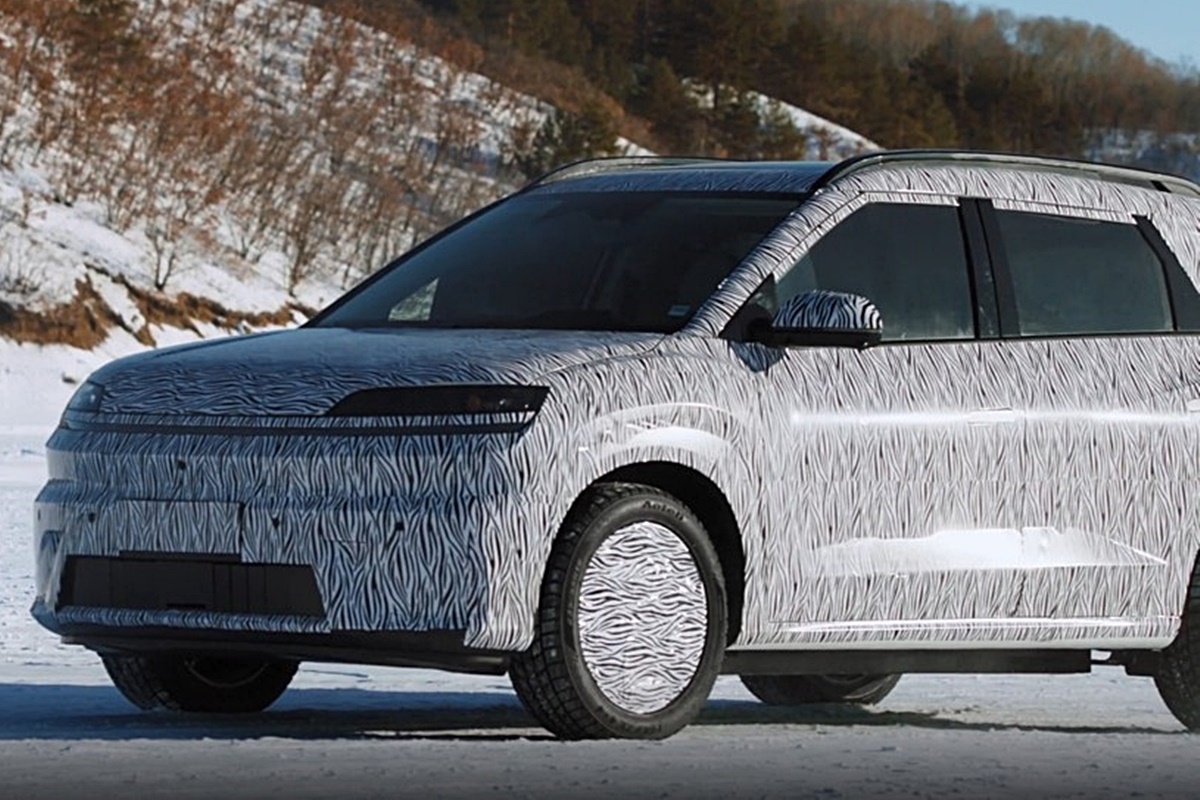
Hyundai’s joint venture in China, Beijing Hyundai, unveiled test footage and interior images of its upcoming electric SUV. This model is significant as it is the first to use Hyundai’s next-generation EV platform, the Pleos architecture. Codenamed OE, the vehicle follows the naming convention of the Ioniq series, hinting that it may debut as the Ioniq 4.
The SUV features a futuristic exterior and a digital-first interior built around a large central display. Scheduled for an official reveal in April, the vehicle represents Hyundai’s effort to regain market share in China’s highly competitive EV segment. The gradual release of teaser content shows confidence in the product’s appeal.


Design with Ioniq DNA and Unified Styling
The exterior design builds on the identity of the Ioniq series. Key features include a closed front grille, sleek lighting, and a prominent front light bar. A similarly styled rear taillight maintains visual continuity. The overall shape emphasizes fluidity and illumination, combining Hyundai’s signature elements with a stronger visual stance.
The interior was first revealed through recently released test footage. A large floating display spans the center console, featuring a full-touch user interface with minimal mechanical buttons. Codenamed OE, the vehicle follows the same naming pattern as the Ioniq 5 and 6, with the second letter E indicating it’s part of Hyundai’s dedicated EV lineup. This further strengthens expectations that it will be released as the Ioniq 4.
As the first mass-produced vehicle on the Pleos platform, the OE is expected to be a key addition to the Ioniq family. While past models made for China often deviated from global styling, this SUV reflects Hyundai’s unified global EV strategy, signaling improved brand alignment and a renewed focus on perceived quality.

Three Models by 2026: Ioniq 4 to Lead the Charge?
Beijing Hyundai aims to launch three new EVs by 2026, beginning with this SUV in 2025. The OE is a strategic model designed to help Hyundai reestablish its presence in China’s transition to EVs. The company targets 80,000 to 100,000 annual EV sales, with the OE as the first of the lineup.
The Pleos platform supports software-defined vehicle (SDV) functionality and a modular architecture. It will feature 800V fast charging, over-the-air (OTA) updates, and integration with vehicle apps. The OE is also expected to include autonomous driving technology and a premium infotainment system.
China is the world’s largest and most competitive EV market. Beijing Hyundai’s investment in next-generation technology for this SUV reflects the strategic importance of this launch. Industry observers are watching closely to see if Hyundai’s OE will signal the beginning of a renewed push in China’s EV market. If the model is officially named Ioniq 4, it could reinforce Hyundai’s global alignment strategy.
























